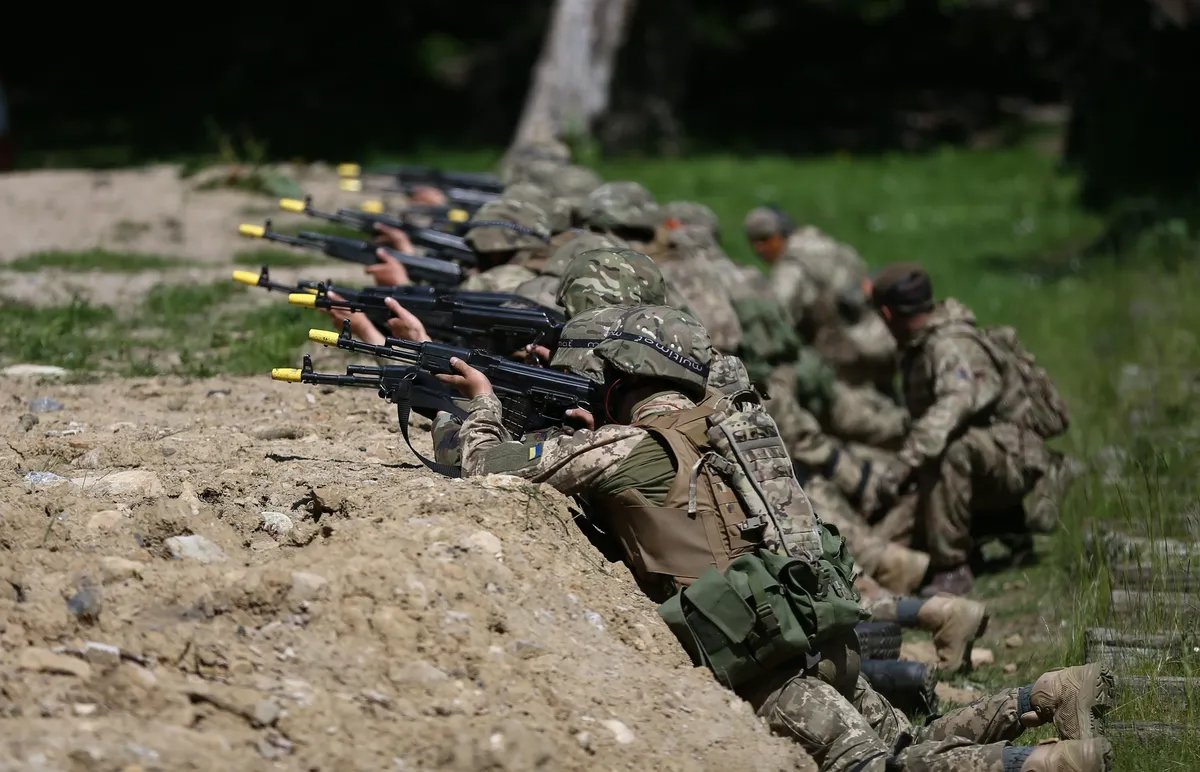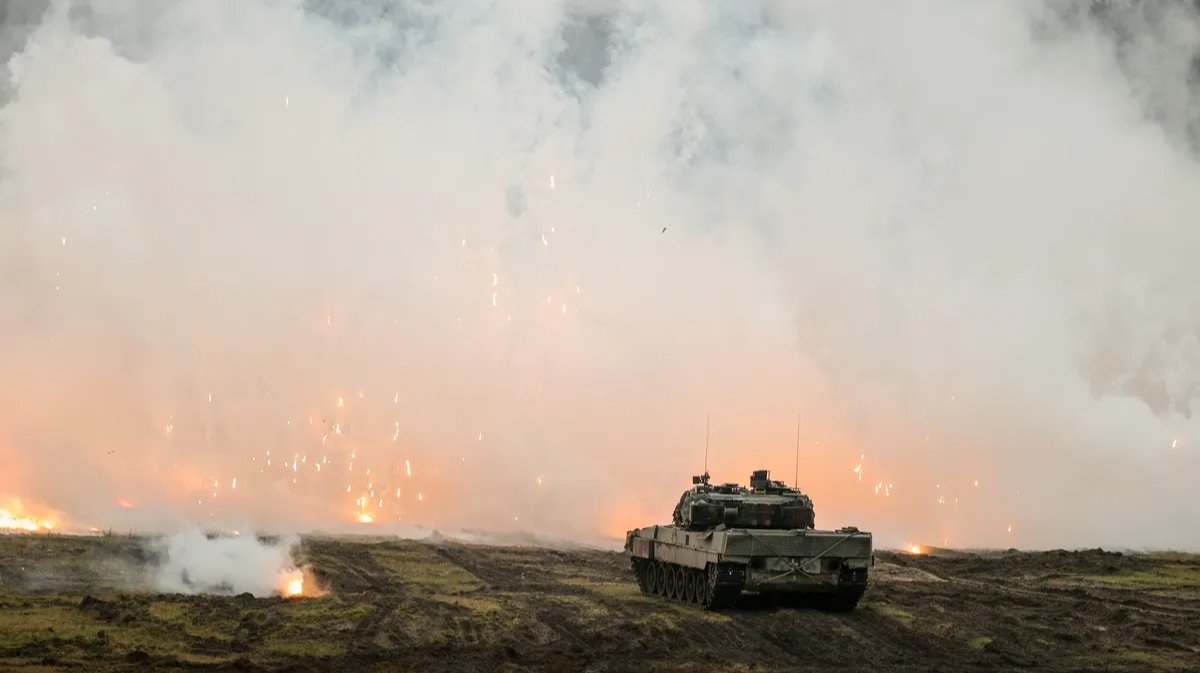“Things look not bad. I would say it’s generally positive, but it’s difficult. Our heroic people, our troops on the front of the frontline are facing very tough resistance. Because for Russia to lose this campaign to Ukraine, I would say, actually means losing the war,” Ukrainian President Volodymyr Zelensky said in an interview with NBC to describe the current situation in its fight against Russia’s aggression. At the same time, the Ukrainian leader did not disclose any details about the country’s counter-offensive push.
Another round
“We are witnessing the first stage of the counter-offensive, and it has been going successfully for the Ukrainian army so far,” Oleksandr Musiyenko, head of the Centre for Military and Legal Studies, tells Novaya-Europe. “Ukrainian forces now need to breach the first line of defences, cut into the Russian positions from the flanks, and establish a corridor to allow a large number of military equipment to pass through. Ukraine enjoys successes south of the village of Velyka Novosilka. Russian troops are retreating from settlements there to move to the second line of defence. According to my information,
Ukraine only brought around 30% of its reserves into action. When the main trained units are thrown in the mix, the goal of pushing forward might be achieved with a much greater intensity.”
Israeli military expert David Sharp is also certain that Ukraine is yet to deploy its main reserves, while what we are witnessing today is only the first stage of the operation rather than its climax. The Ukrainian army can put fresh forces to use in the coming days.
“As far as I know, there weren’t any major offensive actions from Ukraine’s side in the past few days,” Sharp tells Novaya-Europe. “However, what was reported are active and successful strikes on Russia’s equipment and artillery. For example, reports emerged on 14 June that high-precision weapons destroyed five Msta-S self-propelled howitzers which was captured on video. The rainy weather that prevented military hardware from advancing across fields. We can surmise that Kyiv is doing its homework and corrects plans ahead of a new round of offensive operations.”
The Ukrainian army has so far re-captured at least seven settlements and liberated around 100 sq.km. of territories. According to the Israeli expert, Ukraine’s biggest successes came in the so-called Vremivka ledge where most de-occupied villages are located.
“We saw a chaotic retreat of Russians from a section of the Vremivka ledge, which was likely accompanied by huge losses,”
Sharp continues. “Russia’s counter-attacks did not yield any success. It is also captured on footage. There is potential for a flank strike on Russian positions here. The defending side could possibly be forced to leave its positions. Certain success can also be seen on the sections of the frontline located more to the west. For example, the village of Lobkove was taken. However, Ukraine’s unsuccessful attempts to attack were also recorded there.”
According to David Sharp, we can assume that a clearance operation is underway to neutralise Russia’s large-scale minefields, which have been deployed in front of the defence lines.

Photo: EPA-EFE/ADAM VAUGHAN
Current losses
Russian President Vladimir Putin said at a meeting with military bloggers that Ukraine had lost more than 160 tanks and 360 armoured vehicles since 4 June. Many experts blast these numbers as absurdly overblown. “I am certain that Ukraine is yet to even activate these forces at the current stage of the offensive,” David Sharp says. “These losses could only happen in a colossal-scale bloodbath. This huge amount of [destroyed] military equipment would be captured on video footage. Everything that was blown up or repelled near Russia’s positions would be recorded and shown publicly. In this sense, Moscow is not shying away from demonstrating its successes. According to Oryx, a project that collects visual evidence of military equipment losses, Ukraine has only lost around 80-90 units of hardware since the beginning of the offensive. However, this number includes tanks, infantry fighting vehicles, armoured personnel carriers, as well as trucks, and even small drones. It’s clear that these are minimal assessments which can be used to make conclusions on the scale of losses. The ratio in comparison with Russian units stands at around one to one. These are serious losses for each side. But they do not come anywhere close to the data revealed by Putin.”
“The results can be quite scary for Russia if it turns out that the commander-in-chief truly believes in these numbers.”
Objective observers reported that Ukraine had lost four Leopard tanks and 16 Bradley infantry fighting vehicles. At the same time, the upcoming US aid package includes 15 more of these vehicles and 10 Stryker armoured fighting vehicles to, evidently, offset the losses sustained by Kyiv.
According to Oleksandr Musiyenko, Ukraine’s allies provide the equipment and ammo required for the offensive in a timely manner. He believes that it will help the country to cement its successes.
“It’s too early for Russia to cheer for Ukraine’s losses,” David Sharp says. “The US showed that it can very quickly resupply Ukraine with equipment in place of the lost units. Kyiv still has a lot of tricks up its sleeve. We do not know what formations Russia has today, where they are stationed, and how many of them are out there. If Ukraine pushes beyond the Vremivka ledge by a few more kilometres, they will run into Russia’s second line of defences. And that’s where everything will depend on the training, preparations, and motivation of both armies. I believe that Ukrainians are not after slowly advancing forward into Russia-controlled territories, they are looking for vulnerable sections to throw the defences off balance overall.”
Senior Ukrainian official Mykhailo Podolyak said on 15 June that the Ukrainian counter-offensive was yet to begin, while the Ukrainian army was only conducting offensive operations to identify weaknesses in the Russian defences.
Step by step
“We are now seeing active operations to cut down two ledges, Vremivka and Bakhmut-Soledar, which interfere with choosing the attack directions for the Ukrainian army,” Roman Svitan, a Ukrainian reserve colonel, tells Novaya-Europe. “Which will be followed by a frontline alignment. I suppose it will take a couple more weeks. Simultaneously, springboards for future advances are being formed: Orikhove, Vuhledar, and Donetsk springboards. Tight clashes are also underway near Marinka, Bilohorivka, and Bakhmutka. Moreover, the water that spilled out after the Kakhovka dam explosion is retreating now. Russian forces are now trying to reanimate their flooded positions on the left bank of the [Dnipro] river. Meanwhile, the Ukrainian army is getting a chance to cross the Dnipro.”
According to Svitan, Ukraine managed to breach the first line of defences on many stretches of the frontline to reach the second one. At the same time, the minefields that Russia deployed in the six months of preparing to defend these territories are a serious factor that Ukraine has to take into account.
“Unfortunately, the lack of necessary aircraft support affects the Ukrainian army’s speed of advance,” Svitan explains. “However, this was also included in the offensive plans. Ukraine is forced to slowly break through, step by step, with no air support. It’s not possible to dull Russian defences in any other way, however. This is why Ukraine is suffering equipment and personnel losses. But if we take overall numbers, we can say that the Ukrainian army losses are very insignificant today.”
Join us in rebuilding Novaya Gazeta Europe
The Russian government has banned independent media. We were forced to leave our country in order to keep doing our job, telling our readers about what is going on Russia, Ukraine and Europe.
We will continue fighting against warfare and dictatorship. We believe that freedom of speech is the most efficient antidote against tyranny. Support us financially to help us fight for peace and freedom.
By clicking the Support button, you agree to the processing of your personal data.
To cancel a regular donation, please write to [email protected]

